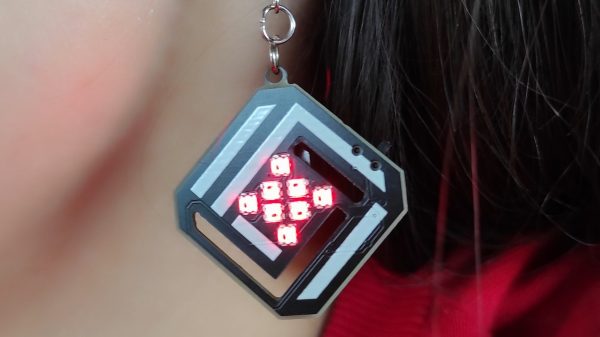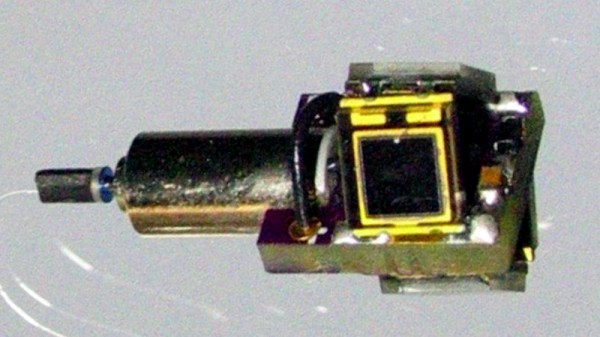If there’s one area of the human anatomy we rarely try to draw the eye, it’s the ears. Nonetheless, [DIY GUY Chris] has developed some LED earrings that should do exactly that.
The earrings are made using PCBs as the very body of the jewelry itself. The PCBs for each ear play host to eight WS2812 LEDs in a tiny 2020 form factor. The LEDs get their instructions from an ATtiny13-A AVR microcontroller, with some further supporting hardware to get everything playing happily together. Each earring runs off a single CR1220 coin cell, which sits on the obverse side of the earring to stay out of sight. The earrings are programmed with pogo pins to avoid the need for any bulky connectors.
By virtue of the tiny addressable LEDs, the earrings are capable of displaying full RGB colors. [DIY GUY Chris] has programmed the earrings with simple color fades, as well as some fancier chase animations as well.
We’ve seen some great PCB jewelry before, too. Video after the break.
Continue reading “Electronic Earrings Are PCB Art You Can Wear”












